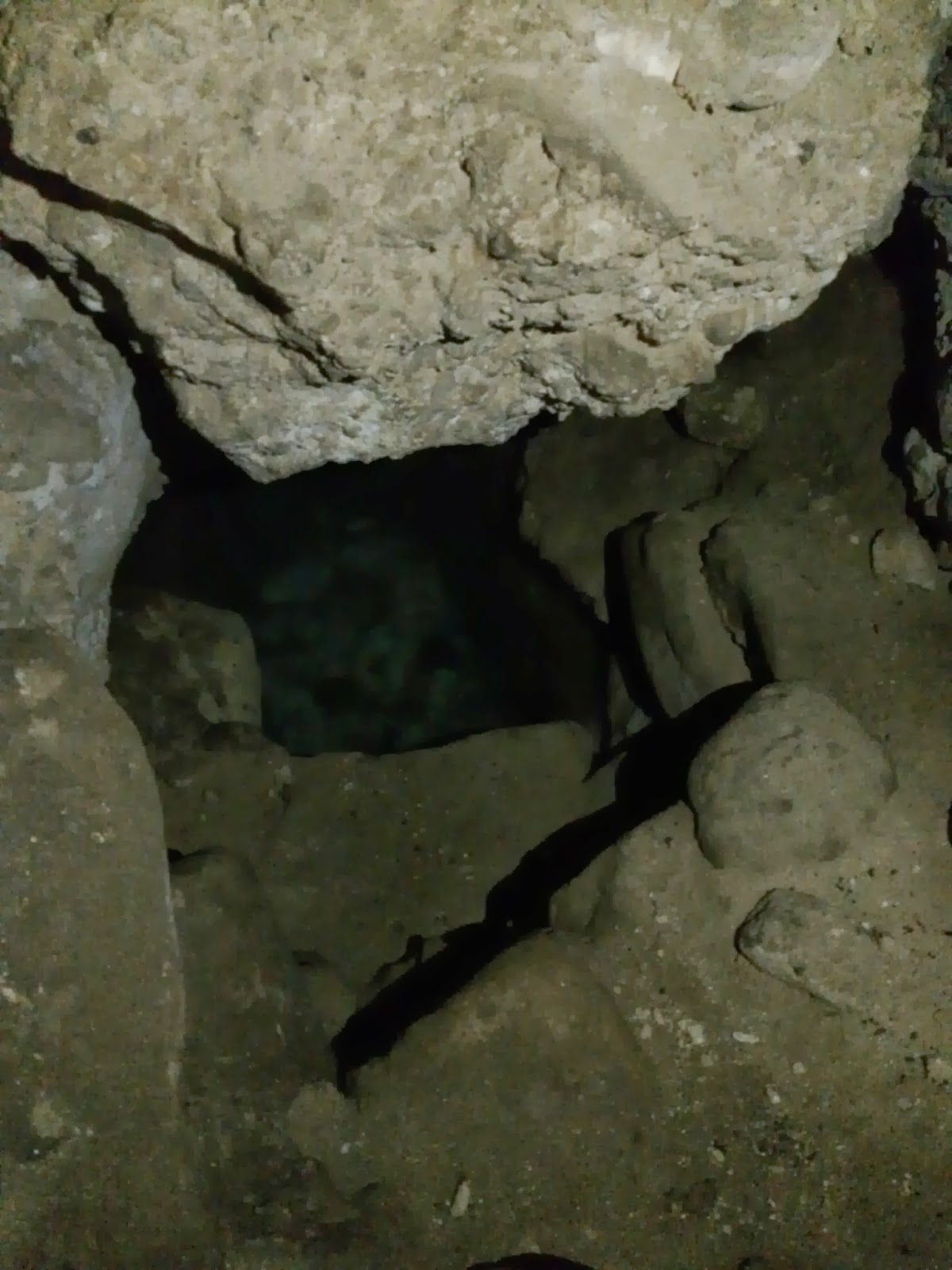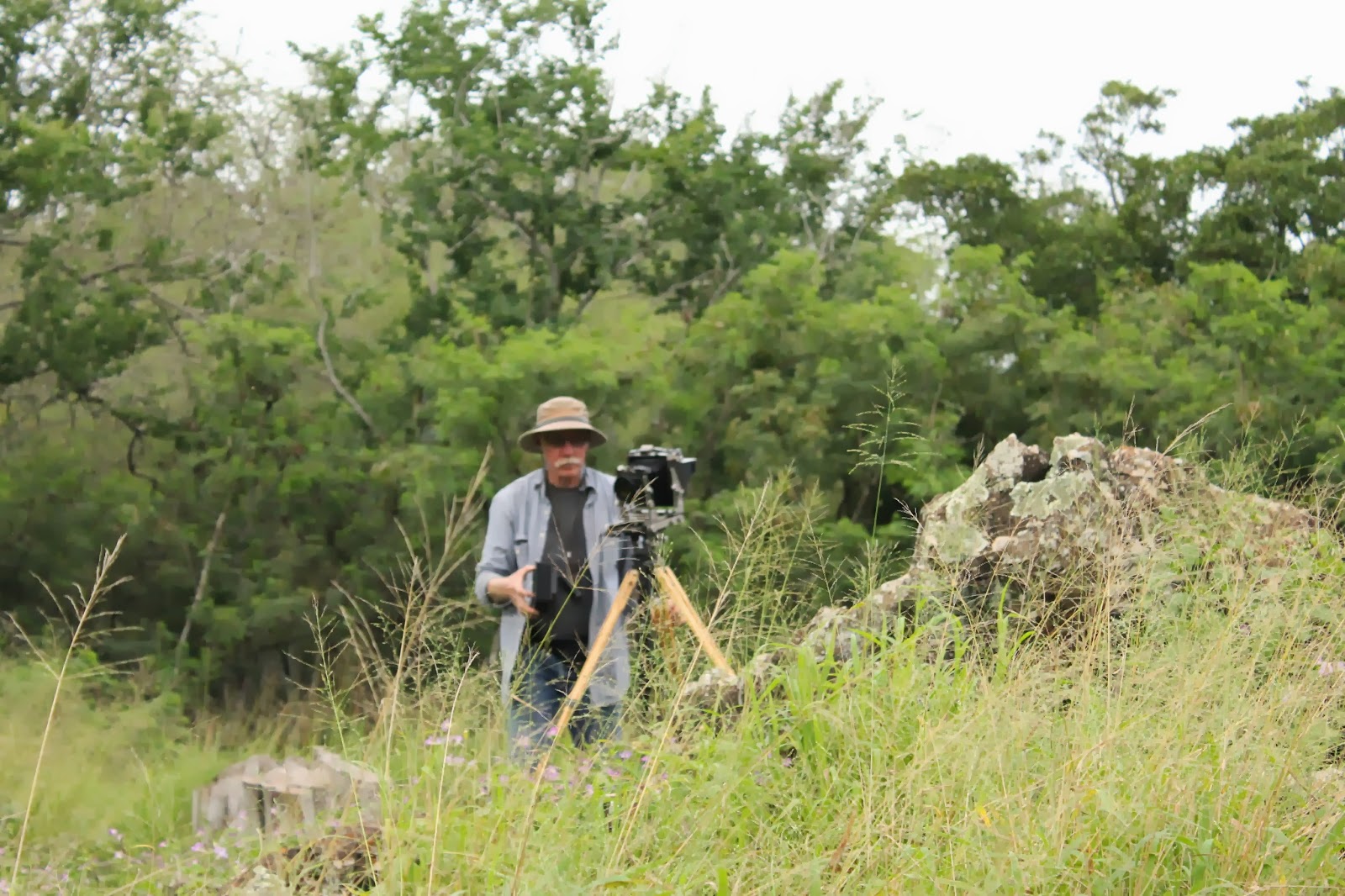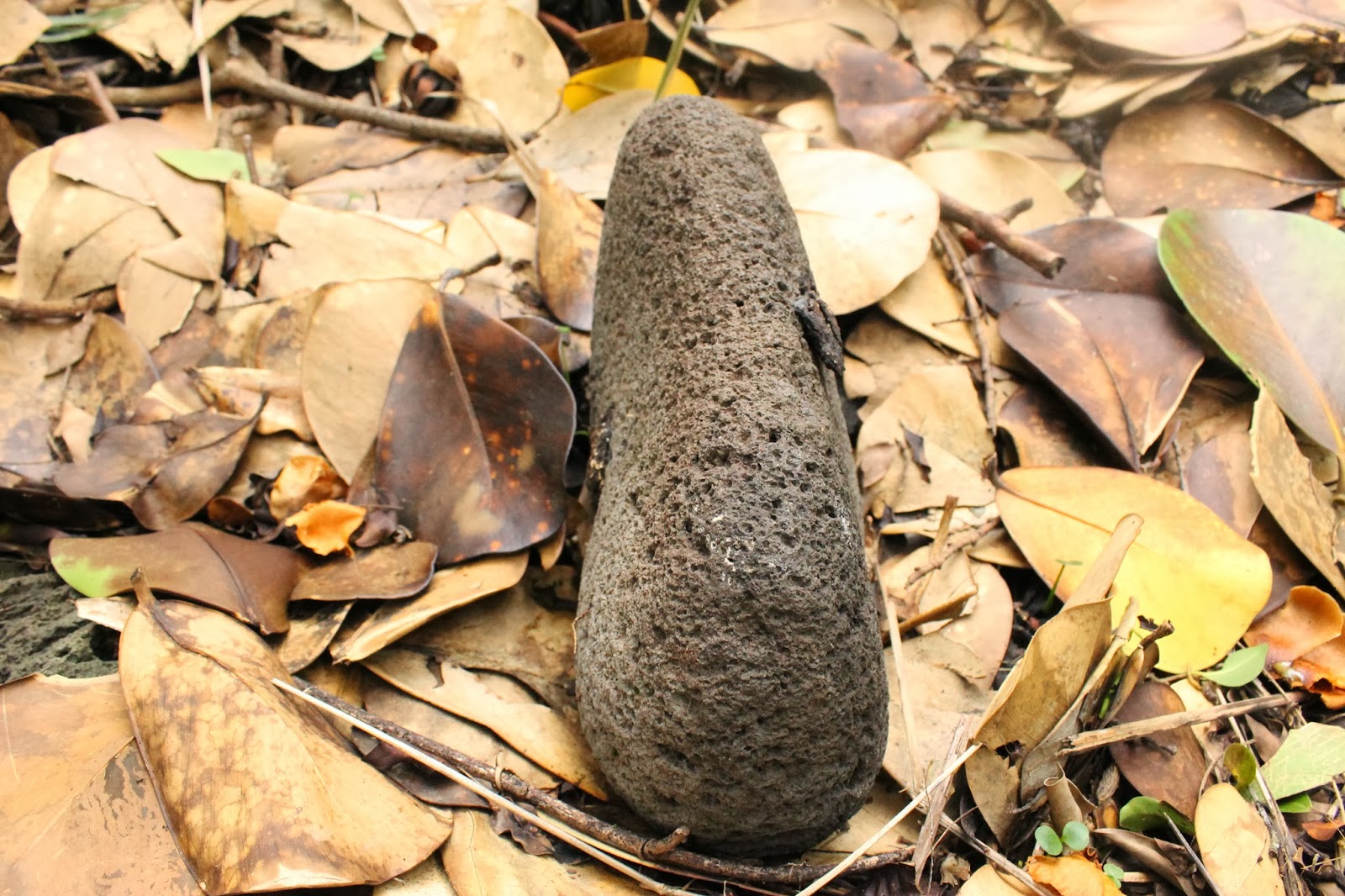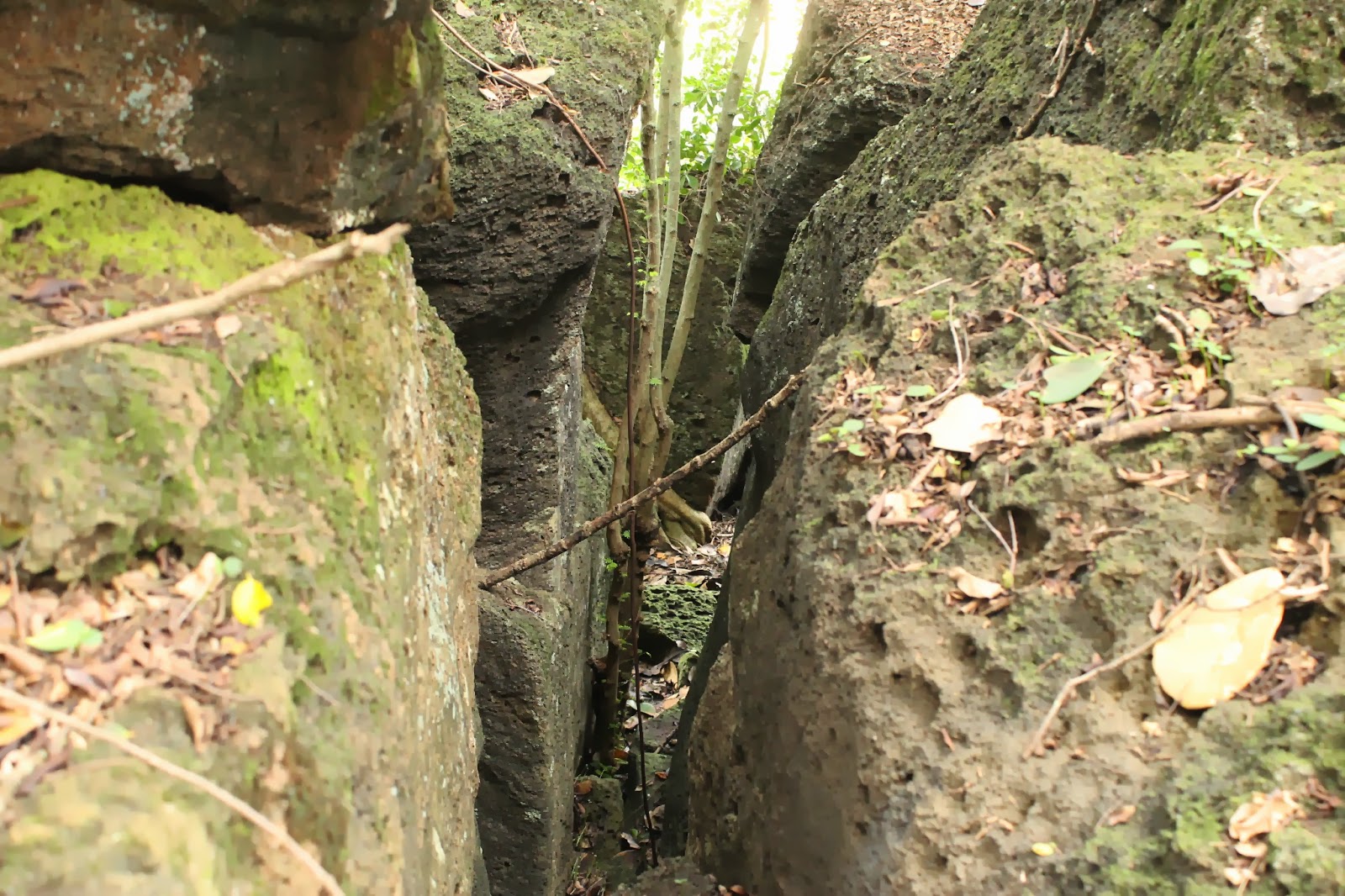This is my third post of the Kawailoa district on my blog so far. Since the Waialua to Waimea, and Kupolopolo entries. Kawailoa is full of sites that still remain relatively intact. I was recently invited to accompany a cultural impact study of the district that took place last week Monday. Nicole, a reader of this blog and my newest friend. Headed the communication with landowners and data gathering throughout the day. Her colleague, Jan Becket was there to take images and to contribute his knowledge on the site that he had pointed out to him years ago. Some of Jan Becket's images from sites around Oahu are in a book that he collaborated entitled, Pana O'ahu. That book was one of my inspirations to pursuing knowledge about historic sites around the island!
In the beginning of the day everyone was a little reluctant because of the weather. I just up and went to the north side with my wife and started on my own...
At Puaena Point, I have mentioned before that the body of Elani, the father of Kamahana the last Mo'i of the original Oahu line, was placed here to decompose in the open. After his part in the botched rebellion against the Maui chiefs under Kahekili II's rule. But commoners that died with no family to care for their remains were also placed on the shore or on the small island off shore, Haka kau kanaka. Their bodily fluids would seep into the ocean and attract sharks that the people living nearby would then catch. The area around what is now known as Haleiwa was actually named after stink smells because of this.


There are stories of important stones nearby Puaena Point that were pointed out to visitors of the area all the way up to the time when the Haleiwa Hotel was still in use. One was a curative stone that was visited by people from all over the island. If one were to come here and offer seaweed and the correct prayer. They would be cured of whatever was troubling them. Another story is that a stone here could tell the fortunes of someone's future through dreams. My favorite story that I've read was in the, "Sites Of Oahu" book. Una Drage Hunt had a diary entry that speaks of a visit to the Haleiwa Hotel. She sees some children push a prominent balancing stone off of another and it slid down a hill. Later that night a large party of fishermen in canoes arrive and set up camp in the grove behind the hotel. She is told that they always arrive at that time of the season and hunt fish that make their way up the stream during a full moon. She and other guests hurry to finish their dinner to watch the fishermen do their thing. But they are disturbed by loud wailing and crying as if someone died. They found out what had happened, they told her that someone stole their fishing god and so they cannot commence with their fishing expedition. The interpreter also mentions that if they were to find the culprit that person would be skinned alive. She asks what the fish god looked like, and what is described catches her dumbfounded. As she realizes that the stone that she saw the children knock down was the fish god. She leads the fishermen to where it is and they recover it and place it back where it belonged. No harm came to anyone...


After Puaena, the "land of the sea sprays." It was time to meet with Nicole and Jan. We jumped in Nicole's car and convoyed with Jan to the sites they knew about. The sites are all located in Kawailoa where the former Meadow Gold Farm was. Nicole is researching what kind of cultural impact a new highway that could be planned to ease traffic because of the recent "turtle beach" issue for north shore traffic would displace.
We had a couple of issues with entering some sites due to conflicting scheduling with the different landowners. One of them, Uncle Bobby was very helpful and was our guide for the day. These sites are all on private property and I would not encourage trespassing on anyone's property without getting permission first...
The first site we visited was a suspected house site. There are some conflicting assumptions about sites in the area. Since it is very close to the land gifted to the kahuna class based in Waimea and the amount of heiau in the area. Homes would not have been built so near to heiau. It is possible though that high chiefs would have had the right to build homes here...
The reoccurring growth of royal palms found here like I always seem to find at important sites around the island...
Another new thing that I have recently learned to look out for is the notching of stones. For what purpose, it is unknown...
Jan has a hard copy of McAllister's study that he uses to refresh his own vast wealth of knowledge.
Here is a cut out from a newspaper showing an important pohaku on the makai side of Kam. Hwy in Kawailoa. He mentioned about it still being there until a new land owner removed it from his yard. Jan tried to find out where it went but the land owner denied it ever being there...
Uncle Bobby left us and then came back to join us at another location that Jan new of. He also hinted about another possible complex near the road and Kahokuwelowelo Heiau up the hill. We ran out of time on this day, but you can link to my first trip to see images of it at the top of this post. I was a little misguided back then, but now I feel more confident about my new found knowledge of the area. After being around these guys.
We walked straight into the overgrown grass to see our final site of the day. Jan described it as a well preserved platform with a prominent large stone in the center.
I realized how Jan's photographs of pohaku in his book Pana O'ahu come out so good. Even though they're just black and white. He clears some growth and takes a lot of time to focus up on just the right part of the scene he intends to portray. Later in the week I took a look at Pana O'ahu and giggled when I saw all of the cuttings on the ground from his clearing.
While they helped clear all of the overgrowth. I went and followed one of the stone walls to see how large this site could have been. Upon closer inspection, I found that one of the stones had a bowl like feature that had been collecting water...
After a long day of learning and watching these professionals do their thing, and a million mosquito bites. We all said goodbye and went home. Jan and Nicole planned on returning to visit the structure closer to the road as well as Kahokuwelowelo Heiau up on the hilltop the following Sunday. I knew I was not going to be able to accompany them because of a bike race in Makaha and then I had to go to work after that. So...
...I woke up early the following Wednesday and couldn't resist trying to locate the sites on my own.
Again, Nicole is doing this study for KS to determine what structures are going to be destroyed. If a new road or possible highway is created to ease traffic in and out of Kawailoa. In my honest opinion, all of the sites pointed out to me or those that I have read about. Would out number those found in Waimea Falls park in the next ahupuaa. That area is preserved and this one should be as well. It reminds me of how the H3 freeway was pushed into Halawa Valley. When it was originally planned to go into Moanalua Valley. The Moanalua community gathered together and preserved their precious sites, but most of Halawa's were destroyed. If we played the number game in this situation, I would have to say Halawa had more sites than Moanalua. Although, sites at all ahupuaa are equally important.
I'm unsure where the stone that Jan had a newspaper clipping of was located. But there was a prominent stone mentioned when the road was being built. That was the cause of the bend in the road because a man that tried to remove it died...
The first site I visited on my return was one that Jan pointed out when we first got there on the previous visit. This is a possible house site as well and closer to the ocean. Again marked at some point in time with royal palms.
A new tactic that I have overheard is to look under prominent stones for coral offerings. They reveal venerable sites. This would be harder to find and prove than rock stacking, to a naysayer. Although rock stacking and terrace building can also be dispelled by a modernist. But these things don't happen by nature. It takes a thinking mind to purposely gather the same sized stones and place them together.
Here are two upright stones. One looks like it has been disturbed though. Maybe a cow knocked it over on day...
Here is a matching sized groove on this stone buried under the earth. That seems to have been support for the upright stone that may have been displaced. Just a guess...
... and what is at the base of these stones? Coral...
I bid farewell to this site and moved back on to the road and up to find Kahokuwelowelo Heiau.
Here is a dried up stream bed that would have been a possible water source for the kahuna of the district.
Here is that large outcropping hidden in the overgrowth. This is where we left off the day one our first visit with Nicole, Jan, and Uncle Bobby. Nicole and I took a look around this outcrop on the first day. There are some rock walls on it and we though we were already at Kahokuwelowelo. Although Jan assured us that the heiau was further up the hill...
Here is a rock wall or pen that may be modern in construction possibly for cattle. The stone were very large though and would take more than one man to move.
This stone just stood out from anything in the area. It looks water worn and I imagined it was a stone pillow or a grinder or something.
Another stone with a hole for water collecting I guess.
After checking out all of the nooks and crannies of the outcropping. I headed up the hill to find the heiau.
A small rock wall emerged from the overgrowth and I continued my trek into the bushes. Blazing my own trail with nothing more than slippers and a camera.
The next feature that revealed itself was a large sloping pyramid shaped rock formation. It had at least to slightly large bowls that were already collecting water since who knows when. Just in front of it was a small stone terrace.
One of the stones built into the terrace had a marker of some sort....
After another smaller outcropping of some large stones. The hill became steeper and I new I was in the vicinity of Kahukuwelowelo. To my suprise, I found one of the pill boxes set up by the military. There are a few more of these in the area overlooking the North shore. Last time I researched them, not even the military knew where they all were. Some of them can be spotted from the road...
The oval shaped hill top where Kahukowelowelo Heiau stood is here on this hill. The grass was super high and I was pretty nervous about tripping on something and rolling down the hill. The pill box nearby has undoubtedly disturbed the heiau's original construction.
This loosely packed rock pile seems to be stones from Kahokuwelowelo Heiau. Maybe relocated at the time when the pill box was made. I tried to stand on the highest sections to see if I could get a better view of what else was hiding under the tall grass. There were some stones scattered all around the hill but no structures of walls as far as I could tell.




Kahokuwelowelo "the comet" was visited by McAllister and he documented the entire hill with the heiau walls and structures complete at the time. The last of the high priests of Oahu Kingdom, Kaopulupulu. Practiced the ancient ways of the kahuna here and later he visited this place one last time during his ill-fated journey with his son that lead to his death by Kahahana, his Ali'i that did not head his advise. This heiau is said to have been like a college for training kahuna in the ways of old. This area was crown land owned by the ali'i. A commoner would be in fear of death if they even approached this hill. The Hawaiian people still visit these important sites till this day and sometimes you can see that they have cleared the land in its honor...

Please hold all sites from our glorious past sacred and be respectful about where we came from. Progress is good but not at the cost of destroying what still remains. In order that future generations will not be able to experience it. Roots baby, keep it pono in time and place for our kupuna! Aloha!


































































































